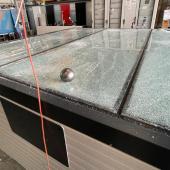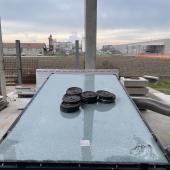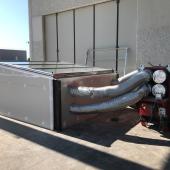Glass Roof Safety: Tests Required by the New UNI 11895:2023 Standard
(Pubbl. 14/02/2023)Recently, UNI has published the new technical standard UNI 11895:2023, titled "Glass for construction - Safety of glass roofs - Test method, classification of results, and guide to the correct selection of safety performance."
Application of the UNI 11895:2023 Standard
The standard specifically applies to glazing used as infill panels, secured either linearly or at specific points on one or more sides, and installed in roofs, canopies, and shelters that are not publicly accessible.
It excludes glass roofs designed for unrestricted public access, such as glass floors or pavements, and does not apply to roofs made of materials other than glass, such as fiberglass or polycarbonate.
What is the objective of the new standard on the safety of glass roofs?
The standard aims to assess and minimize the risks for individuals located either beneath or on top of a glass roof.
Those beneath the glass roof could be at risk of injury from falling glass fragments in case of breakage or from objects falling through the structure.
On the other hand, individuals accessing the glass roof could fall onto the glass surface and suffer injuries from direct contact with it.
What tests are included in the new standard?
The UNI 11895:2023 standard describes a test sequence that uses the following combination:
- Hard body impact
- Soft body impact
- A static load test under post-breakage conditions
- A hail resistance test
Istituto Giordano at the forefront with Technical Note No. 66/67
For several years, Istituto Giordano has been carrying out a technical procedure for its clients called Technical Note No. 66/67, which closely resembles the one outlined in UNI 11895:2023. This procedure was issued by the CWCT (Center for Windows and Cladding Technology), a national and international research center based in Bath, England.
The British standard does not include a hail resistance test, but it requires by default that the glass canopy undergo conditioning at +40°C, with the test performed at that temperature.
We are sharing some photos from the execution of the CWCT TN 66/67 test, which is very similar to the one described in the new Italian standard UNI 11895:2023.
If you would like to learn more about the activities carried out by the laboratory, click here.
![]() For information and/or quotes: Ing. Giacomo Rito (g.rito@giordano.it)
For information and/or quotes: Ing. Giacomo Rito (g.rito@giordano.it)











 Do you need more information about our services?
Do you need more information about our services?